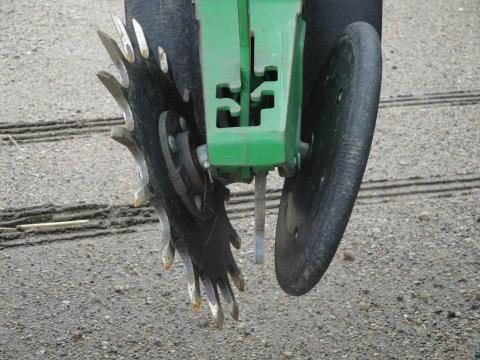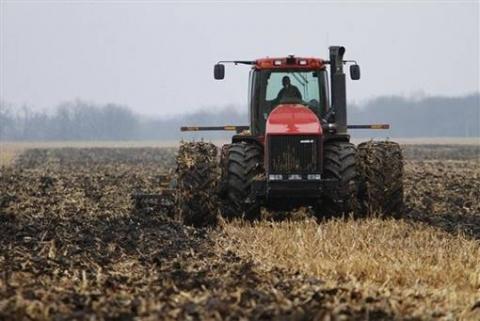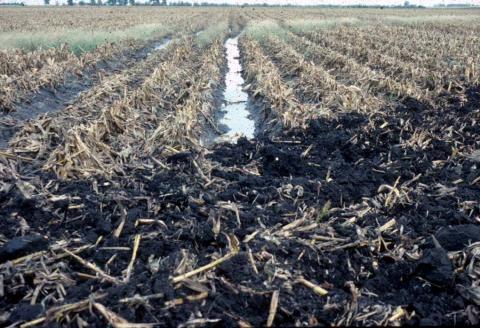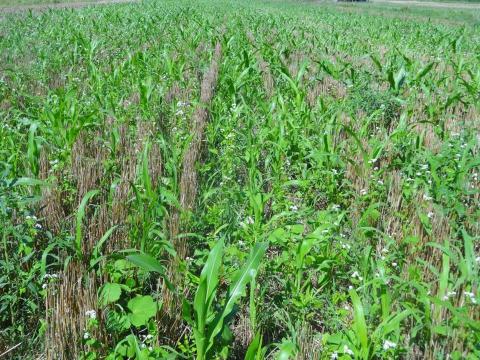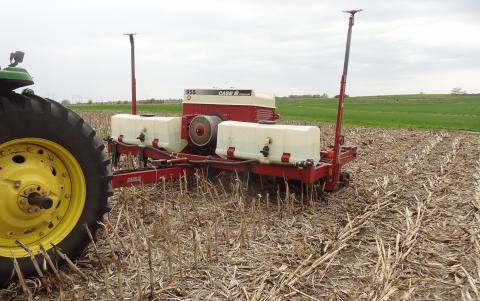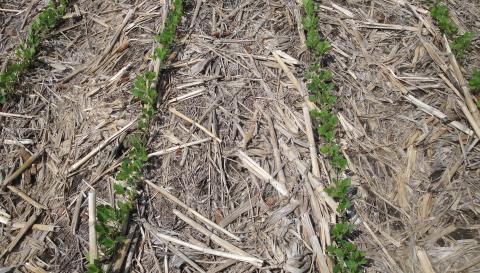Avoiding Sidewall Compaction at Planting
April 19, 2019
Don't let this season's planting conditions get the better of your crop stand. Described here are four factors contributing to sidewall compaction and steps you can take to minimize the challenge.
Wait For Better Conditions Before Heading Out On Wet Soils
April 11, 2019
If you're putting a log chain or tow strap in the tractor cab just in case you get stuck, even you know it’s too wet. Waiting a day or two for the soil to dry out some will provide better soil conditions for planting and stand establishment.
Addressing Harvest Ruts and Erosion Gullies
April 11, 2019
With the wet spring, producers need to evaluate soil moisture conditions before heading to their fields to clean up flood debris and fill in ruts, rills, and gullies.
Leave the Stubble to Protect the Soil
November 16, 2018
No-till November, a USDA NRCS campaign, encourages farmers to park their tillage implements this fall, in favor of keeping crop residue on the soil surface. Using no-till as a system reduces erosion, runoff, and soil moisture evaporation.
Cover Crops for Soil Health in Storm-damaged Fields
July 13, 2018
Fields that were hailed, flooded, windblown, or where planting was prevented this season can benefit from the many soil services provided by cover crops. In addition a growing cover crop can help reduce erosion from water and wind and may help protect soil moisture levels.
Practices to Reduce Wind Erosion
May 11, 2018
Keeping your soil covered with growing cover crops or crop residue are two of the best ways to help protect it from wind erosion. Both practices will help to keep the wind off the soil surface and reduce soil moisture evaporation, providing a moister soil that's less apt to move.
Building Resilient Soil Systems using Residue, No-till, and Cover Crops
March 29, 2018
Crop residue, cover crops, and no-till farming practices can provide a positive buffering effect to changes in climate and extreme weather events. Together they can help keep more water and soil on-farm and contribute to improved soil health.
Cover Crop Field Day Monday, Sept. 25 near Lincoln
September 15, 2017
View six cover crop mixes seeded after wheat harvest, each planted for a specific objective, as well as how fertilizer affects biomass production. See also how planting date affects biomass production. Includes a no-till drill demonstration and various legume cover crops for nitrogen fixation.

